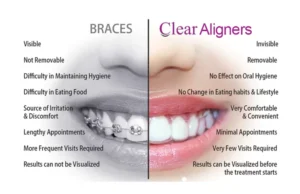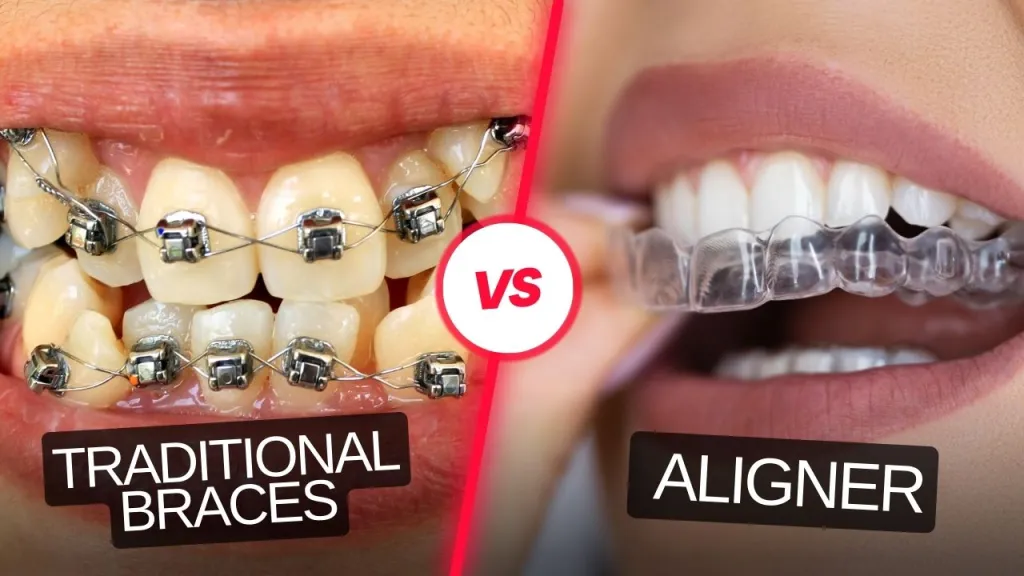The orthodontic industry is witnessing a fierce battle between traditional braces and clear aligners, fueled not just by patient demand but by aggressive corporate promotion, professional defense, and strategic marketing. The race is no longer just about effectiveness in treatment; it has evolved into a commercial war where orthodontists, general dentists, and business managers all have a stake in shaping the future of teeth straightening.
Aligners vs. Braces: The Clinical Debate
Braces have been the gold standard for decades, providing predictable results for complex cases requiring precise tooth movement. Orthodontists, who spend years mastering biomechanics, generally favor braces for their control and reliability. Aligners, on the other hand, have gained prominence due to their aesthetic appeal, convenience, and ability to attract a wider demographic. While initially designed for mild to moderate cases, technological advancements have expanded their capabilities, though skeptics argue that they still fall short in complex corrections.
An Image to Consider: The Orthodontist’s Perspective
An image shared on the web portrays braces as irritating, uncomfortable, and inconvenient while presenting aligners as their flawless opposite. Additionally, the image suggests that braces do not allow patients to visualize the end result of their treatment. However, this oversimplification is misleading. While aligners offer aesthetic benefits, braces remain the most effective solution for complex orthodontic issues. Moreover, modern orthodontics includes digital treatment planning for both braces and aligners, allowing patients to preview their expected results. Such biased depictions often serve marketing interests rather than providing an accurate clinical comparison.
The Corporate Engine Driving Aligners
The rise of aligners is largely driven by aggressive corporate strategies. Companies like Invisalign, SmileDirectClub, and other emerging brands have turned orthodontics into a business frontier, marketing their products as lifestyle enhancements rather than medical treatments. Direct-to-consumer (DTC) aligner companies have further disrupted the field by bypassing orthodontists altogether, positioning their products as a cheaper, more convenient alternative.
This corporate push has placed pressure on orthodontists, many of whom now find themselves forced to adopt aligners to stay competitive, despite reservations about their efficacy for complex cases. In many ways, aligners have shifted orthodontic treatment from a purely medical practice to a hybrid of healthcare and consumer goods.
General Dentists: The Middle Players
General dentists have been key promoters of aligners, often using them as a lucrative expansion of their services. Unlike braces, which require specialized training, aligners come with standardized treatment plans, allowing general dentists to tap into orthodontics without the need for extensive expertise. Companies have capitalized on this by offering simplified aligner courses, creating a business model where more practitioners can participate without necessarily mastering the complexities of orthodontics.
While this democratization of orthodontic treatment increases accessibility, it also raises concerns about compromised treatment quality. Without in-depth orthodontic training, some dentists may mismanage cases, leading to unsatisfactory results and even long-term dental issues for patients.
Business Managers: The Invisible Hand
Behind the scenes, business managers and corporate executives play a critical role in the aligner vs. braces race. These decision-makers influence pricing models, marketing strategies, and the push for subscription-based orthodontic solutions.
Many corporate-backed dental chains and DSOs (Dental Service Organizations) prioritize aligners over braces due to higher profit margins, reduced chair time, and ease of scaling treatments across multiple locations. This shift means that financial incentives, rather than patient needs, often dictate treatment recommendations—a troubling reality for the integrity of orthodontic care.
Patients Caught in the Crossfire
At the heart of this race are patients, many of whom are unaware of the forces shaping their treatment options. The emphasis on convenience, affordability, and aesthetics has led many to believe that aligners are universally effective, when in reality, some cases require the precision and control of braces. Patients must navigate a landscape where marketing often overshadows clinical recommendations, making informed decision-making more challenging than ever.
Conclusion: Striking a Balance
The race between aligners and braces is far from over. While aligners offer undeniable benefits in aesthetics and convenience, their rapid adoption has been driven more by corporate interests and marketing than by clinical superiority. Orthodontists must uphold the integrity of their profession by prioritizing patient needs over market trends, while general dentists should recognize their limitations in complex orthodontic cases.
Ultimately, patients deserve treatment based on expertise rather than corporate agendas. The future of orthodontics must strike a balance between innovation, ethics, and professional responsibility—ensuring that the race is won not by marketing budgets but by the best interests of those seeking a healthier, straighter smile.
Meanwhile , Do keep checking the ChatGpt the right of this screen and use it for your dental doubts
Dr. Syed Nabeel, BDS, D.Orth, MFD RCS (Ireland), MFDS RCPS (Glasgow), is a dedicated dental professional with a special interest in Neuromuscular Dentistry (NMD). With over two decades of experience, he has been committed to diagnosing and managing occlusal and temporomandibular joint (TMJ) disorders using a patient-centered approach that integrates the principles of neuromuscular occlusion.
Alongside his clinical work, Dr. Nabeel is deeply interested in digital dentistry and the role of artificial intelligence (AI) in dental practice. He believes that technology has the potential to enhance patient care by improving diagnostics and treatment precision. His work in this field reflects his curiosity and dedication to advancing dentistry in meaningful ways.
Dr. Nabeel also enjoys sharing knowledge and has been lecturing extensively on neuromuscular dentistry. His approach to teaching emphasizes practical insights, evidence-based methods, and a focus on patient well-being, making his sessions both engaging and valuable for fellow professionals. Additionally, he is a sought-after speaker and blogger on practice management, where he provides insights on optimizing workflow efficiency, patient engagement, and the integration of modern technology in dental practices.
Based in Mysore, India, Dr. Nabeel is the founder of Smile Maker, a practice where he strives to combine advanced diagnostic tools with personalized treatment plans to help patients with occlusal and TMJ-related concerns. With a strong commitment to continuous learning and improvement, Dr. Nabeel remains deeply invested in the evolving landscape of dentistry, always seeking ways to enhance patient outcomes with care and compassion.

